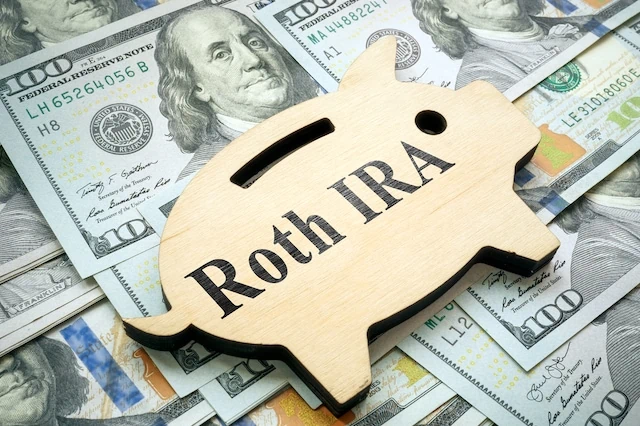When you retire, you might leave your job behind, but you still collect income. And if you collect income, the tax man cometh.
Retirement budgets generally are smaller than working-years budgets in the first place because you’re pulling in less income, not to mention you always have to keep an eye on the size of your nest egg. So you don’t want taxes to eat any more of your income than necessary.
Fortunately, smart planning can help you lessen your tax burden in retirement—and even once you’re retired, you can still pull a few levers to reduce what you owe.
Today, I’m going to talk about several (legal!) ways people can reduce their taxes in retirement and keep more of their income.
Table of Contents
Keep the Tax Man at Bay in Retirement

The following strategies represent two ways to lower your tax obligations in retirement:
–Moves you can make before retirement that will help you reduce or outright avoid tax payments on income once you retire.
–Moves you can make in retirement to whittle down what you owe.
Some of these tax breaks are income- or situation-dependent, so you likely won’t be able to put every single one of these actions to work. But the more of these methods you can execute on, the greater your potential tax savings.
1. Contribute to a Roth Account

One of the most straightforward ways to reduce your tax liability in retirement is to invest in an account that keeps the IRS at bay whenever you make withdrawals.
When you invest in a traditional 401(k) or individual retirement account (IRA), you fund those accounts with pretax dollars and avoid taxes within the account. The IRS only comes to collect when you start making withdrawals from the account.
But with a Roth IRA or Roth 401(k), you fund the account with dollars that have already been taxed. But from there, it’s basically hands-off—you can withdraw contributions tax- and penalty-free whenever you’d like, and you can withdraw earnings on those contributions tax- and penalty-free once you’ve owned the account for at least five years and reach age 59½.
In short: Your Roth account income won’t be taxed at all in retirement.
There are two noteworthy drawbacks to this:
- How much you can contribute to a Roth IRA is tied to your income. The Roth IRA contribution limit for 2025 is $7,000. However, to contribute that much, your modified adjusted gross income (MAGI) must be less than $150,000 if you’re single, or less than $236,000 if you’re married and filing your taxes jointly. Your ability to contribute phases out up to $165,000/$246,000, at which point you can no longer contribute to a Roth IRA at all.
- Depending on when in life you contribute to a Roth account, the money you use to contribute might be taxed at a much higher rate than what withdrawals from a traditional plan would be taxed at when you retire. As a general rule, you’ll come out ahead in taxes if you contribute to a Roth account during your leaner earning years, but you’ll probably pay at a higher rate if you contribute during your peak earning years.
Still, if your goal is simply to avoid the tax man, investing in a Roth IRA or 401(k) is one of the most common ways to do it.
- if you simply want to avoid the tax man regardless of how the math pans out, you can max out your Roth IRA
- The most noteworthy drawback has to do with your tax brackets. Let’s say that when you retire, your income puts you in the 22% tax bracket. If you contributed to a Roth IRA when you were in, say, the 10% or 12% tax brackets, you’d come out ahead—it’s much better to take a 10% cut up front than a 22% cut down the road.
Related: How Is Retirement Income Taxed?
Do you want to get serious about saving and planning for retirement? Sign up for Retire With Riley, Young and the Invested’s free retirement planning newsletter.
2. Contribute to a Health Savings Account (HSA)

A health savings account (HSA) can provide a similar benefit, albeit with a much narrower scope.
An HSA has what’s called a “triple tax advantage.” That’s because …
–You fund it with pretax dollars.
–Those funds can be invested with no tax consequences.
–If you withdraw funds, as long as they’re used to pay for a variety of qualified medical expenses (QMEs), ranging from copays to prescriptions to bandages, you won’t pay taxes or penalties on those withdrawals.
In other words, an HSA is something of a juiced-up Roth IRA, enjoying all of the same tax benefits while also avoiding taxation up front, but you must spend funds on QMEs for withdrawals to remain tax-exempt.
Also worth noting: Once you reach age 65, you can withdraw funds for any purpose and avoid a tax penalty, but you’ll still owe taxes on those funds.
A big downside to HSAs is that not everyone is eligible to open one. If you want to open and contribute to an account, you must be enrolled in an eligible high-deductible health plan (HDHP), not be enrolled in Medicare, and not be claimed as a dependent on someone else’s tax return. (And before you worry, don’t—you can still make withdrawals once you’re on Medicare.)
Related: The Best HSA Providers in 2025
3. Invest in Tax-Exempt Securities

We’ve already been over the tax consequences of traditional and Roth retirement accounts.
However, it’s possible that you might have some money stashed away in a taxable brokerage account. The good news? Because you contribute with money that has already been taxed, you can withdraw your money whenever you’d like tax- and penalty-free.
The bad news? Unlike with tax-advantaged accounts, brokerage accounts are subject to taxable events. If you sell stock for a profit, you’ll have to pay capital gains taxes. If you receive dividends or interest income, you’ll have to pay taxes on that money.
However, one way to avoid at least some of those taxes is to invest in certain tax-exempt securities. The two most common types are:
–Municipal bonds: These are bonds issued by states, cities, and other non-federal governmental entities. The interest on these bonds is exempt from federal income taxes, and sometimes even state and local taxes (usually if you live within that state and/or locality).
—Note: Not all municipal bonds are tax-exempt. Taxable muni bonds do exist, though they’re less common.
–Treasury bonds: These are bonds issued by the U.S. government. While their interest income is subject to federal taxes, it’s exempt from state and local taxes.
Of course, you shouldn’t invest in these instruments only because they’re tax-advantaged. But if they make sense within your portfolio, enjoy the benefits! Just don’t make the mistake of holding them in IRAs and other tax-advantaged accounts, which neutralizes munis’ tax qualities.
4. Have a Tax-Smart Withdrawal Strategy

During retirement, it’s possible you’ll be withdrawing from more than one investment account—say, a traditional IRA and a taxable brokerage account, or a Roth IRA and a traditional IRA.
Withdrawal strategies not only help you withdraw what you need while ensuring your nest egg lasts long enough in retirement—they also are designed to ensure you make the most tax-efficient withdrawals possible.
For instance, you might choose to withdraw just less than the amount that would push you into a higher tax bracket, avoiding the extra taxation on your retirement income. Or, if you needed more income above that level, you could pull those excess funds from a Roth IRA, as qualified Roth IRA withdrawals generally don’t count toward your taxable income.
Related: ‘Dirty Dozen’: 12 Tax Scams to Watch Out For [And How to Avoid Them]
5. Make Qualified Charitable Donations

Many retirees aim to give to their favorite causes in retirement. That’s not just a noble goal—it’s also one that can help you save on your taxes.
If you are age 70½ or older, you can make a qualified charitable distribution (QCD)—also known as IRA charitable distribution or IRA charitable rollover—from your IRA to a charity, then exclude that amount from your gross income. The QCD limit for 2025 is $108,000 for individuals (up from $105,000 in 2024), or $108,000 for each spouse up to $216,000 for a married couple. Also, QCDs must be made directly from the IRA, and donations can be made only to certain qualified charitable organizations as defined in the tax code.
This break may help donors avoid reaching a higher income bracket, which in turn may prevent the phase-out of different tax deductions, such as personal exemption and itemized deductions.
Also worth noting: People with traditional IRAs typically must take required minimum distributions (RMDs) beginning at age 72 (or 73 if you reach age 72 after Dec. 31, 2022). These RMDs increase an individual’s total taxable income. However, once you reach age 72 (or 73), QCDs can count against your RMDs for the year.
Related: How Much Social Security Will I Receive?
6. Move to a State That Doesn’t Tax Retirement Income

Many retirees, free of the geographic binds of a career, choose to relocate. Well, if you happen to live in a state that taxes retirement income, and you move to one of the 13 states that don’t tax retirement income (such as 401(k) and IRA withdrawals and pension payments), that would be a pretty straightforward way to lower your IRS obligations when you retire.
Nine of those states simply have no income tax:
–Alaska
–Florida
–Nevada
–New Hampshire
–South Dakota
–Tennessee
–Texas
–Washington
–Wyoming
The remaining four do levy state-level income taxes, but they explicitly exempt several forms of retirement income. Those states are:
–Illinois
–Iowa
–Mississippi
–Pennsylvania
Also, most states leave your Social Security income alone … but not all of them. Nine states tax Social Security benefits, so if you live in one of those states and move to a state that doesn’t tax Social Security, that’s another way to keep more of your retirement income.
Related: When Should You Take Social Security?
7. “Bunch” Deductions for Maximum Impact

The decision of whether to itemize or take the standard deduction can be a financially significant one.
For the 2025 tax year, the standard deduction is:
–$15,000 for single filers and married couples filing separately
–$22,500 for heads of household
–$30,000 for married couples filing jointly and qualifying surviving spouses
Once you reach age 65, however, you automatically qualify for an additional standard deduction, which is added to your regular standard deduction. If you are blind, you also qualify for the additional standard deduction, and if you are both age 65 or older and blind, your additional standard deduction is doubled.
For the 2025 tax year, the additional standard deduction is
–$1,600 for married couples filing jointly, married taxpayers filing separately, and surviving spouses
–$2,000 for single and head-of-household filers
Some years, you may choose to itemize and bunch together as many tax-deductible expenses as you can.
For example, you might budget for $10,000 worth of charitable contributions each year, which you donate on Jan. 1 of a given year. However, if you donate $10,000 worth on Jan. 1, 2026, and then donate another $10,000 on Dec. 31, 2026, that’s $20,000 donated in roughly the same amount of time, but all within one year—allowing you to maximize your deduction by itemizing. In 2027, you technically wouldn’t donate at all, and you could take the standard deduction instead. You’d repeat the cycle the next year, donating $10,000 on Jan. 1, 2028, and $10,000 on Dec. 31, 2028.
Related: Is Your Retirement on Track? Here Are the Average 401(k) Balances By Age
8. Get Tax Counseling and/or Filing Assistance

All of the aforementioned tips are general in nature—they apply to many people.
But everyone’s tax situation is unique. A few of these tips might apply for you, while a few might not, and most importantly, there are likely a number of other tax strategies you can employ to maximize your income.
And the best way to discover those strategies is to talk to an expert.
If you’re at least 60 years old, you can get help for free through the Tax Counseling for the Elderly (TCE) grant program. The program uses qualified volunteers who have passed tax law training that meets or exceeds the IRS standards. All returns also undergo a quality review.
It’s an excellent option for older people with relatively simple taxes. However, if you’re younger than 60, and/or if you have much more complex finances, you should instead consider hiring a financial advisor. In addition to tax assistance, financial advisors can also help optimize your money situation through strategic investing decisions, acute financial planning, and more.
Want to talk more about your financial goals or concerns? Our services include comprehensive financial planning, investment management, estate planning, taxes, and more! Schedule a call with Riley to discuss what you need, and what we can do for you.
Related: 13 Best Long-Term Stocks to Buy and Hold Forever

As even novice investors probably know, funds—whether they’re mutual funds or exchange-traded funds (ETFs)—are the simplest and easiest ways to invest in the stock market. But the best long-term stocks also offer many investors a way to stay “invested” intellectually—by following companies they believe in. They also provide investors with the potential for outperformance.
So if you’re looking for a starting point for your own portfolio, look no further. Check out our list of the best long-term stocks for buy-and-hold investors.
Related: 10 Best Monthly Dividend Stocks for Frequent, Regular Income

The vast majority of American dividend stocks pay regular, reliable payouts—and they do so at a more frequent clip (quarterly) than dividend stocks in most other countries (typically every six months or year).
Still, if you’ve ever thought to yourself, “it’d sure be nice to collect these dividends more often,” you don’t have to look far. While they’re not terribly common, American exchanges boast dozens of monthly dividend stocks.
Please Don’t Forget to Like, Follow and Comment

Did you find this article helpful? We’d love to hear your thoughts! Leave a comment with the box on the left-hand side of the screen and share your thoughts.
Also, do you want to stay up-to-date on our latest content?
1. Follow us by clicking the [+ Follow] button above,
2. Subscribe to Retire With Riley, our free weekly retirement planning newsletter, and
3. Give the article a Thumbs Up on the top-left side of the screen.
4. And lastly, if you think this information would benefit your friends and family, don’t hesitate to share it with them!






